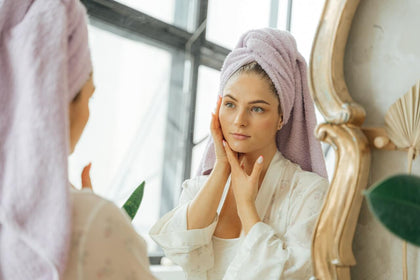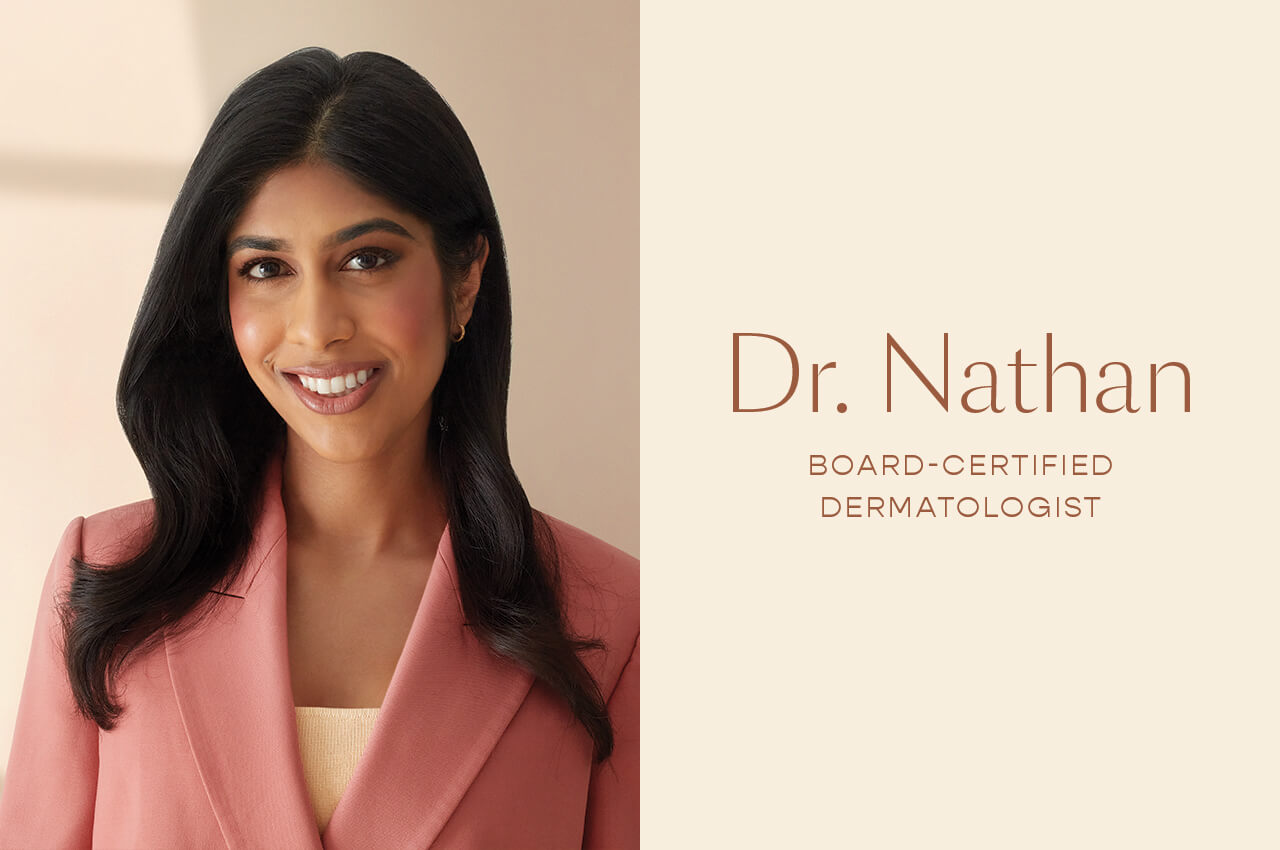There is an abundance of hair treatments that promise to mend split ends and soothe dry hair, but a hot oil treatment is one of the best ways to tend to every issue at once.
But how do you make a hot oil treatment, and what hair type takes to it best? Keep reading to find out more about hot oil treatments and what recipe will work for you. Plus, discover a new way to deeply condition hair — minus the messy oil.
What Is a Hot Oil Treatment?
If your hair feels coarse and dry, you might be on the hunt for a new way to nourish your strands from root to tip. Hot oil treatments have been used to revive dehydrated, dry hair for years.
"A hot treatment helps the oil penetrate the hair shaft," said expert hairstylist Ghanima Abdullah. "Most oils can penetrate the hair shaft, except for petrochemicals like mineral oil. The heat helps them penetrate by softening the hair cuticle, so the oil molecules enter quicker." In addition, the hot oil seals the hair cuticle, which strengthens and protects fragile strands.
Rather than rely on animal-based methods, hot oil treatments are usually plant-based. Olive, marula, argan, coconut, avocado oil and more can all be used on your mane to help reverse the effects of a harsh environment or over-styling.
Read: How Often Should You Use a Hair Mask?
The Benefits of a Hot Oil Hair Treatment
Though the research is limited when considering the effects of specific oils, studies show that oils, in general, can be good for the hair. Many people try a hot oil treatment to minimize split ends and frizzy locks. Some claim that hot oils help with hair growth by increasing blood flow to the scalp, but the research is limited and more scientific evidence is required before coming to a definitive conclusion on the effectiveness of this hair treatment for hair growth.
Some believe that a hot oil treatment can help with dandruff's frustrating (and flakey) effects, but again, the research is limited. If you are struggling with psoriasis, eczema, sensitive skin or any other skin condition, it's well worth checking in with a healthcare professional before pouring a hot oil treatment on your scalp.
The potential benefits of a regular hot oil treatment include:
- Softer, easier to manage hair
- A reduction in frizzy strands
- Fewer split ends
- A moisturized scalp
- Added protection and hydration
- Dandruff relief
- A soothed and healthy scalp
If you're looking to treat your scalp with a little extra loving care, try a scalp serum to help remove scalp buildup and protect the scalp from harmful pollutants. Look for gentle yet effective ingredients that can give your scalp the detox it needs to support healthy hair.
Shop: Shea Whitney's VEGAMOUR Picks
#include-related-slider#
How to Make a Hot Oil Treatment
You could head to the drug store to pick up hot oil treatment, visit a salon for a professional application, or you can take the most affordable route: make a DIY hot oil treatment for yourself at home. The good news? Treatments are usually simple to make and the oils used are easy to find online or in stores. Just be sure to use something that doesn't include synthetic ingredients. "Commercial formulas tend to contain cheap mineral oil, which is useless," warns Abdullah.
Step-by-Step Instructions
Choose an oil you think might work best for your hair type (see more on this below). Here, we've outlined foolproof step-by-step instructions for creating your own DIY hot oil treatment:
- Wash your hair with a natural shampoo to start. "Depending on the oil used, it can help provide a barrier between the hair and the hair follicle. Sulfate shampoos can erode the barrier between the hair and the hair follicle, making the hair follicle weak. Hot oil treatments can help prevent that," said Abdullah. Wash with a sulfate-free revitalizing shampoo to work alongside your hot oil treatment.
- Once the hair has been washed, add up to six tablespoons of your chosen oil to a bowl and heat in the microwave. Alternatively, add the oil to a pan and heat over the stove.
- The last thing you want to do is scalp your skin by applying too hot oil. Apply a small amount of oil to the inside of your wrist first to test the temperature. Protect your clothes by placing a towel over your shoulder.
- Next, apply the oil to the hair and massage the scalp gently. Apply the formula as evenly as possible and make sure it reaches the dryest ends.
- Depending on how dry your hair is or how much help you think it needs, let the oil sit on the hair under a shower cap for approximately 30 minutes. You can also leave it on overnight for a deeply nourishing treatment.
- Once you're ready to remove the oil, use cool water to make sure it's thoroughly washed out. Apply conditioner as usual.
How often you apply hot oil to your hair depends on your hair's needs, but once a week should provoke positive effects. If your hair is exceptionally parched, every couple of days will help.
Is a Hot Oil Treatment Safe?
When applying hot oil to your scalp and hair, you must regulate the temperature. If you don't, you run the risk of burning yourself and causing skin damage. Once you believe the oil to be cool enough, put a small amount on the inside of your wrist or elbow to double-check the temperature.
And just because hot oil treatments are plant-based doesn't mean you won't experience adverse effects. Always patch test the oil on your skin before using it on your scalp, and avoid synthetic ingredients.
Not sure what a patch test is? Simply put a small amount on the skin, and if you don't develop a rash after 24 hours, it should be safe to use.
Different Oils for Different Hair Types
Different oils have different benefits so do your research and choose the oil that is best suited for your hair needs.
Olive Oil
Olive oil has been used to treat hair for centuries. Many believe it adds body and a healthy shine to the hair, but the research is limited. Olive oil is primarily made up of squalene, oleic acid and palmitic acid, which are all emollients with a softening effect. So if you're looking for an extra boost of moisture, this could be a viable option — especially since it's easily found in most kitchen cabinets.
Who should use it? If you have thick, coarse, dry hair that needs extra attention, this could be the oil for you. It won't weigh the hair down and will keep strands quenched and strong.
Marula Oil
Pure marula oil can easily be used on the hair, skin and nails. Marula oil is extracted from the kernels of the marula tree fruit. Marula oil is packed full of omega fatty acids and oleic acid. It can be used on dry hair to tame flyaways and can help reduce the look of acne scars when used on the skin.
Who should use it? Marula oil works really well as a hot oil treatment for all hair types — especially those with curly, frizzy or thick hair.
Coconut Oil
"Coconut oil was studied as a pre-shampoo treatment," Abdullah explained. "It was found to reduce hygral fatigue, which makes the hair cuticle stick up because of excess hair shaft swelling. So, the application of coconut oil as a hair treatment before shampooing saves the hair a lot of mechanical damage while also detangling."
Who should use it? Those with fine hair will feel the benefits of using coconut oil as a hot oil treatment. It has a lower weight than sunflower or mineral oils, which means it can penetrate the hair shaft effectively.
Read: Coconut Oil for Hair Growth — Fact or Fiction?
Argan Oil
For years, argan oil has been used to tame wild strands and prevent fragile hairs from breaking. It's extracted from the core of the argan tree and is rich in antioxidants and vitamins. It can be used as a styling oil and could work well if your brittle strands need more attention.
Who should use it? Traditional argan oil can be pretty dense, so anyone with more delicate strands might want to avoid it. Also, be aware that argan oil includes nut tree oil, so if you experience allergies or have sensitive skin, you might want to discuss it with your doctor before using it.
The Hot Oil Takeaway
If you're looking for an affordable way to tend to your scalp and revive lackluster locks, a regular hot oil treatment might help. However, if you want to treat your strands to a hydrating mask without the time-consuming preparation, a deep conditioning hair mask will deeply condition strands without any mess. The intuitive formula adjusts to the hair on contact to reduce frizz, enhance color and increase shine.
The formula works beautifully on color-treated hair, so you won't have to worry about scalding yourself with a high-temperature treatment. Plus, it can also help boost your overall hair wellness, which is the key to achieving strong, healthy hair that shines from the inside out.
#include-related-slider#
More From VEGAMOUR
Back


















